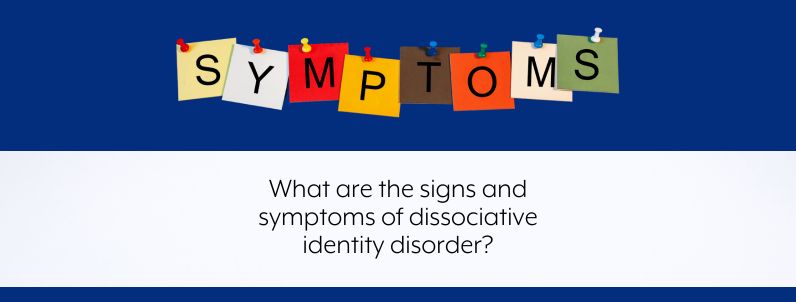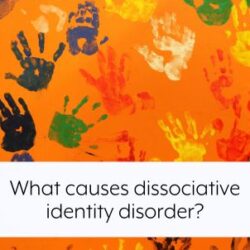
The subjective experience of dissociative identity disorder
Sometimes I find myself somewhere and I don’t know how I got there or where I’ve been, don’t know how I am really, feel unreal, like in a dream. I feel like that now. I don’t know who I am that’s writing this. I’m not real, whoever I am. I feel like I’m ten different people squashed into one, all collapsed down like a concertina. I don’t know where I start and where I end. I don’t know where the inside of me is. I don’t know if I’m really me or I just think I am. It’s the strangest feeling. How can I not know who I am?
Carolyn Spring 2009
A key problem: dissociative identity disorder is often hidden
One of the major difficulties of dissociative identity disorder is that it is so often a ‘disorder of hiddenness’ (Howell, 2011, p.148). Many people with DID have grown up in an abusive family environment where they are sworn to secrecy and where hiding becomes a way of life. In adult life, the stigma and sense of shame around both sexual abuse and mental illness is a strong deterrent to making our history and condition known. And implicit to DID is a disconnection from or avoidance of both the trauma and the dissociated parts of our personality.
It is not surprising that many people with dissociative identity disorder do not appear to people around them as if they are suffering from any kind of mental health problem. Even spouses and partners can be kept in the dark for many years and it is very common for people with DID to hold down responsible and often highly-
When dissociative identity disorder becomes obvious
For some, this seeming normality continues until a particular stressor or life event precipitates a sudden and debilitating breakdown, where the exterior veneer of ‘normality’ is ripped away and dissociative and post-
Dissociative identity disorder: parts of the personality
Someone who has dissociative identity disorder may have distinct, coherent identities within themselves that are able to assume control of their behaviour and thought. When they ‘switch’ to these parts, they may be totally unaware or they may be conscious of themselves acting and talking in a manner different to normal. They may feel that they are just watching what is happening from a distance, incapable of intervening, as if it is not really ‘them’. They may or may not be aware of these ‘alter personalities’, who may present with different names, mannerisms, gender identity, sense of age etc. These ‘alters’ or ‘parts’ very often have a different way of perceiving and relating to the world as well as different characteristics, memories, sense of identity, and emotions.
Switching to another part can sometimes be very subtle whilst at other times it is very obvious to an observer: there can be dramatic changes in tone of voice, body posture, use of language and levels of eye contact, to name but a few obvious signs. The person with dissociative identity disorder however may not be aware that it is happening at all. They may just have a sense of losing time or incoherence about who they are and what they have been doing. They may pick up the conversation at the exact point at which they left it several minutes previously, before they switched, with only a vague sense of ‘missing’ something. They may appear to have fazed out temporarily and put it down to tiredness or not concentrating; or they may appear disoriented and confused. For many people with DID, switching unintentionally like this in front of other people is experienced as intensely shameful and often they will do their best to hide it.
Multiple symptoms rather than ‘multiple personalities’
In practice, the vast majority of people with dissociative identity disorder do not obviously present as if they have ‘multiple personalities’. Instead they present for treatment with a number of symptoms. Some of these are dissociative or post-
Paul Dell (Dell & O’Neil, 2009) argues convincingly that the externally-
‘Dissociative intrusions’
These ‘intrusions’ may take a ‘positive’ or ‘negative’ form, i.e. they may be ‘additions’ or ‘subtractions’. For instance, a flashback is a sliver of memory that is an ‘addition’, an extra piece of information entering consciousness; conversely, amnesia is where memory has been taken away or subtracted so that it is no longer conscious. Similarly, an intrusion may be related to sensation, in either its ‘addition’ or ‘subtraction’ state: for example, pain that is felt that comes from the past (often called a ‘body memory’) is an intrusion that is an ‘addition’, whereas the loss of sensation or even full anaesthesia and being unable to feel a part of the body is that same sensation but as a ‘subtraction’.
Dell also argues that dissociation affects every realm of our lives: ‘There is no human experience that is immune to invasion by the symptoms of pathological dissociation. Pathological dissociation can (and often does) affect seeing, hearing, smelling, tasting, touching, emoting, wanting, dreaming, intending, expecting, knowing, believing, recognising, remembering, and so on’ (p.228).
Full dissociation versus partial dissociation
Dell makes a distinction between ‘full dissociation’ and ‘partial dissociation’. In both states, remnants of dissociated trauma ‘intrude’ or push through from the unconscious into conscious awareness: these include flashbacks, and the many thoughts, feelings and sensations which suddenly come, unbidden, into our awareness, such as memories, smells, emotions, etc. ‘Full dissociation’ is when dissociative intrusions are fully excluded from consciousness, so we are not aware of them: they come to one part of the personality, but not another. They are therefore experienced only when a switch to another part of the personality has taken place and there is amnesia for the main ‘host’ or main part of the personality for what that other part is experiencing, thinking, or feeling.
‘Partial dissociation’ however involves intrusions that are only partially excluded from consciousness, and involves the person being ‘disturbingly…aware of the involuntary, ego-
Symptoms of dissociative identity disorder
Dell suggests a list of 29 symptoms which he argues more realistically represent the symptoms of dissociative identity disorder:
- General memory problems
- Depersonalisation
- Derealisation
- Posttraumatic flashbacks
- Somatoform symptoms
- Trance
- Child voices
- Two or more voices or parts that converse, argue, or struggle
- Persecutory voices that comment harshly, make threats, or command self-
destructive acts - Speech insertion (unintentional or disowned utterances)
- Thought insertion or withdrawal
- Made or intrusive feelings and emotions
- Made or intrusive impulses
- Made or intrusive actions
- Temporary loss of well-
rehearsed knowledge or skills - Disconcerting experiences of self-
alteration - Profound and chronic self-
puzzlement - Time loss
- Coming to
- Fugues
- Being told of disremembered actions
- Finding objects among their possessions
- Finding evidence of one’s recent actions
‘Somatoform’ symptoms of dissociative identity disorder
Dell’s list is a huge improvement on the stereotyped and minimalistic criteria in diagnostic manuals. He also mentions 5 ‘somatoform symptoms’, meaning symptoms related to the body, and other clinicians such as Ellert Nijenhuis stress the fact that somatoform symptoms are just as important as psychological ones in dissociative disorders. For example, people with dissociative identity disorder often are physiologically hyperaroused—wound-



4 Comments
This article was very helpful for me to understand myself better, and my past. I intend to see a doctor soon, but this was amazingly helpful.
I… I really needed this article. It’s helped me understand a bit more. While I don’t personally think I’ve experienced switches, a lot of everything else is matching up, so maybe I have but was kept in the dark about it. I’ll definitely be doing some more digging
This past year i have re experienced trauma which as a child i had some therapy for. I experienced in front of my partner a behavior i thought was normal which turns out is dissociative identity disorder? Reading your article has made me understand why I have always lost time, been found passed out and staring for long periods of time. I had an awareness as a child that i behaved different but never knew why
Thank you this was very helpful I dated somebody for four years who just admitted to me recently that he has DID. I really thought I was going crazy! One minute he was loving and the next minute cold and detached. Sometimes he would use strange voices and I would hear him mumbling him to himself but I attribute it to him possibly having drank too much alcohol. I just thought he was an alcoholic and these things that were going on we’re just part of being drunk for him? Now I’m realizing it’s was just a part of the disassociation. Thank you so much for the clarity. He lives with his sister and told me that if he wasn’t with her he would have to live in a group home situation and now I have a better understanding as to why he is the way he is. It makes me very sad because I truly do love him and I pray for him often. He spoke of his mother once or twice how she shunned him when he was born and never wanted anything to do with him he was the last of nine children – I think that had a huge part in splintering his personality.